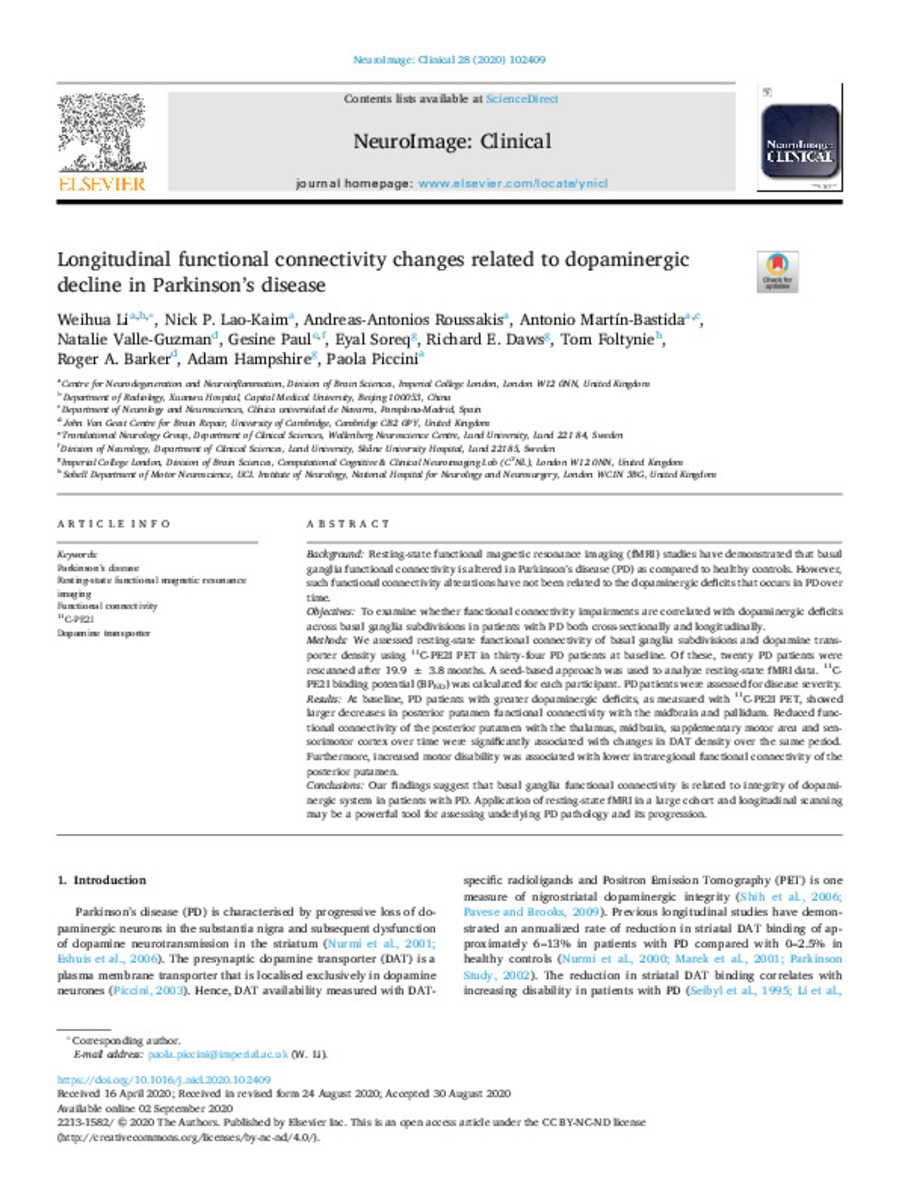Longitudinal functional connectivity changes related to dopaminergic decline in Parkinson’s disease
Keywords:
Parkinson’s disease
Resting-state functional magnetic resonance imaging
Functional connectivity
11C-PE2I
Dopamine transporter
Note:
This is an open access article under the CC BY-NC-ND license
(http://creativecommons.org/licenses/by-nc-nd/4.0/).
Citation:
Li, W. (Weihua); Lao-Kaim, N.P. (Nick P.); Roussakis, A.A. (Andreas-Antonios); et al. "Longitudinal functional connectivity changes related to dopaminergic decline in Parkinson’s disease". NeuroImage: Clinical. 28, 2020, 102409
Statistics and impact
0 citas en

0 citas en

Items in Dadun are protected by copyright, with all rights reserved, unless otherwise indicated.







